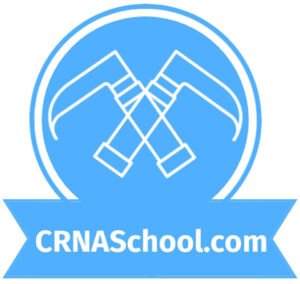University of Minnesota CRNA School: A Top Nurse Anesthesia Program
Every healthcare professional has a moment when they want to make a big difference.
This moment often leads to some ICU Nurses continuing their education and searching for another skill such as Anesthesia.
The University of Minnesota CRNA School is at the top, offering a top-notch nurse anesthesia program. It’s not just about getting a degree; it’s about gaining skills to make a real difference.
At the University of Minissetoa CRNA School, students learn a lot and get hands-on experience. This education prepares them to be leaders in the field. It focuses on personal and professional growth, preparing students for anesthesia care and its challenges.

Living in Minneapolis adds to the experience.
The city is full of culture and has affordable living. It’s a great place for students to grow personally and professionally.
The University of Minnesota CRNA School may be the perfect place for those who want to become CRNAs.
Key Takeaways
- Minnesota CRNA School boasts a 100% first-time pass rate in the last few years.
- The program, accredited for ten years, emphasizes hands-on clinical training in diverse settings.
- Graduates are awarded a Doctorate of Nursing Practice (DNP)
- Small class sizes foster close relationships between students and faculty.
- UofM is one of 3 CRNA Schools in Minnesota
Important Dates and Information
| Program Length | 36 Months |
| Application Deadline | August 1st |
| Degree Offered | DNP |
| Class Size | Average class 15 |
| Cost | $107,800 |
| Contact | Joanne Donnelly DNP, APRN, CRNA Program Director Nurse Anesthesia Area of Study donne320@umn.edu |
| Website | UMN CRNA School |
| School Location | 5-140 Weaver-Densford Hall 308 Harvard Street SE Minneapolis, MN 55455 |
Overview of the University of Minnesota CRNA School
The University of Minnesota CRNA School is located in Minneapolis. This city is known for its lively culture and drive for new ideas.
The program lasts three years and gives a Doctor of Nursing Practice (DNP) degree. It covers 98 semester credits, ensuring students learn everything about Nurse Anesthesia.
With only 15 students in each class, the program offers a close learning experience. Students get personal help from their teachers.
This helps them grow in their studies of nurse anesthesia. The school values diversity and wellness, making it a great place for future Nurse Anesthetists.
Students get a lot of hands-on training in different Hostpital and Surgery Center Settings. This prepares them for the changing needs of healthcare.
The program’s success is shown by a 100% pass rate for the CRNA boards in the recent years and a 100% job rate for graduates.
The cost of the program is $101,800 for tuition. The total cost, including fees and expenses, is $107,700. The deadline to apply is August 1. Classes start in September, starting a 36-month journey in nurse anesthesia.
Program Excellence and Accreditation
The University of Minnesota’s Nurse Anesthesia program is known for its excellence.
It has accreditation from the Council on Accreditation of Nurse Anesthesia Educational Programs until 2029.
This shows the program meets strict educational standards, preparing students well for careers in anesthesiology.
Curriculum Highlights
The curriculum is designed to mix classroom learning with hands-on clinical practice over three years.
It covers key areas like anesthesia practice, pharmacology, leadership, and ethics. This prepares students with the skills they need for success in the field.
Students also get to practice at over 35 clinical sites. This gives them a wide range of experiences to improve their learning.
The DNP program at UMN provides a deep education in nursing. It combines theoretical knowledge with practical skills. Students learn from the latest healthcare advancements.
They also complete over 2,500 supervised clinical hours. This ensures they’re well-prepared for the challenges of anesthesia practice.
Specialty Areas within Nurse Anesthesia
Nurse anesthesia students can choose from various specializations. These include:
- Obsterics
- Outpatient Anesthesia
- Pain Management
- General Surgery
- Neurology
- Cardio Thorasic
This variety lets students match their education with their interests and career goals. The program also meets the 2024 requirements for a doctoral degree in advanced nursing roles.
Clinical Training and Experience
The University of Minnesota CRNA program focuses on practical clinical experience. This is key for becoming skilled certified registered nurse anesthetists. Students learn about invasive monitoring and regional anesthesia, gaining vital skills for real-world use.
Urban and Rural Clinical Rotations
The program includes clinical rotations in both urban and rural areas. This exposure helps students adapt to different healthcare settings. They receive guidance from experienced mentors during these rotations.
This mix of practical experience and diverse settings prepares students well. They become ready to face the challenges of the healthcare world.

Living in Minneapolis while Attending UMN
Living in Minneapolis as a UMN student is exciting. It’s a place where you can grow both in school and personally. The city has a great mix of culture, fun, and learning.
This makes your time at the Twin Cities nursing school special.
Cultural and Recreational Opportunities
Minneapolis is known for its lively arts scene and diverse areas. Students can check out:
- Local theaters like the Guthrie Theater
- Museums such as the Walker Art Center and the Minneapolis Institute of Art
- Annual festivals celebrating music, food, and art
- Beautiful lakes and parks, perfect for outdoor fun
The city loves music and has lots of breweries. It’s easy to find fun and chill spots. Plus, the public transport is great for getting around.
Cost of Living and Lifestyle Estimates in Minneapolis
Living in Minneapolis is pretty affordable. There are many housing choices for all budgets. This means you can focus on your studies without worrying about money.
Here’s what you might spend each month:
| Expense | Average Cost |
|---|---|
| Rent (1-bedroom apartment) | $1,200 |
| Utilities | $150 |
| Groceries | $300 |
| Transportation (public) | $100 |
| Miscellaneous | $150 |
Minneapolis is a fantastic place for students. It’s affordable and full of life. With help from the Twin Cities nursing school, you can dive into your studies and enjoy the city.
Application Process and Important Deadlines
Understanding the application process for the University of Minnesota’s CRNA School is key for those aiming to join the nurse anesthesia program.
This journey involves meeting important deadlines and specific requirements. These steps are crucial to increase your chances of getting accepted.
Application Dates
The University of Minnesota CRNA School offers a highly respected Doctor of Nursing Practice (DNP) program in nurse anesthesia, preparing students for advanced practice roles in the field.
With a strong focus on clinical excellence and research, the program provides comprehensive education and hands-on experience.
Applications for the University of Minnesota’s CRNA program are typically due by August 1st each year, with interviews held in the fall. Prospective students are encouraged to check the program’s website for the most current deadlines and requirements.
Requirements for Admission
To get into the nurse anesthesia program at the UMN, you must meet certain criteria.
- Bachelor of Science in Nursing (BSN) or a bachelor’s degree in a related field from an accredited institution.
- Registered Nurse (RN) License: Applicants must hold a current, unrestricted RN license in the United States.
- Critical Care Experience: A minimum of one year of full-time critical care experience is required. The University of Minnesota prefers ICU experience, particularly in areas like Surgical, Medical, or Cardiothoracic ICUs.
- GPA Requirement: A minimum cumulative GPA of 3.0 on a 4.0 scale is required, though competitive applicants often have higher GPAs.
- GRE Scores: The GRE is not required for the University of Minnesota’s CRNA program.
- Letters of Recommendation: Applicants must submit three professional references, including one from a current or recent supervisor, and two from colleagues familiar with your clinical performance.
- Personal Statement/Essay: A detailed written statement outlining your motivation for becoming a CRNA, your critical care experience, and your career goals.
- Interview: A formal interview is required for admission and is typically held in the fall after the application deadline.
- Certifications: While not strictly required, the University of Minnesota encourages applicants to hold certifications such as CCRN (Critical Care Registered Nurse).
- Shadowing Experience: Shadowing a CRNA is recommended to strengthen your application, though not mandatory.
Be sure to check the University of Minnesota School of Anesthesia’s official website for any updates or specific details regarding these requirements.

Available Financial Aid Programs
Financial aid is key for CRNA students to manage costs. The University offers federal loans, scholarships, and grants for those who need them. The financial aid office helps students find these opportunities.
Also, partnerships with places like the Mayo Clinic offer financial benefits. This helps students in their health sciences education.
Conclusion
The University of Minnesota CRNA School is a top choice for those wanting to become Nurse Anesthetists.
It offers a rich curriculum that includes tough coursework and lots of clinical practice. Students also get a supportive learning space that values teamwork and personal growth.
Living in Minneapolis adds to the learning experience, with its lively culture and fun activities. Students can enjoy the city’s parks, arts, and food scene while studying.
Remember, the program is competitive, with a 10% acceptance rate. Plan ahead, as new sessions start in the fall.
Choosing the University of Minnesota CRNA School is a smart move, given the high average salary of $232,000 for CRNAs.
It’s a rewarding career path that lets you grow professionally in Minnesota’s dynamic healthcare scene. Take this chance to advance your career and enjoy all that Minnesota has to offer.
FAQ
What makes the University of Minnesota CRNA School stand out from other nurse anesthesia programs?
The University of Minnesota CRNA School is known for its advanced curriculum. It combines theory with practical skills. Students enjoy small class sizes and get personalized mentorship.
They also get to experience diverse clinical settings, both in cities and rural areas. This makes their education richer.
What accreditation does the University of Minnesota CRNA program hold?
The University of Minnesota Nurse Anesthesia Area of Study is fully accredited. It has the highest accreditation from the Council on Accreditation of Nurse Anesthesia Education Programs.
This accreditation is valid until 2029.
What degree will I earn after completing the nurse anesthesia program?
After finishing the program, students will get a Doctor of Nursing Practice (DNP) degree.
This degree prepares them to take the National Boards and start work as Certified Registered Nurse Anesthetists (CRNAs).
How does the program prepare students for clinical practice?
The program focuses on practical experience.
Students learn invasive monitoring and regional anesthesia techniques. This prepares them for various clinical settings.
What is the living experience like in Minneapolis for students?
Minneapolis is lively with arts, music, theater, and outdoor activities.
The cost of living is moderate. The city has many housing options and public transport for students.
What are the application deadlines for the University of Minnesota CRNA program?
Applications for the CRNA program are due by August 1st
What are the admission requirements for the CRNA program?
To apply, you need a valid RN license and a Bachelor’s degree in nursing. You should also have at least one year of critical care nursing experience.
Applicants must have a graduate-level statistics course and a strong academic record.
What costs should I expect when attending the University of Minnesota CRNA School?
Tuition costs vary based on residency. Students should also budget for textbooks, equipment, and living expenses.
The financial aid office helps with funding options for nursing students.
What financial aid options are available for students?
The University of Minnesota CRNA School offers financial aid. This includes federal student loans, scholarships, and grants for nursing students. These help manage educational expenses.
What other States have CRNA Schools?
Almost every state in the country has a CRNA School. If you want to find every state and how many schools it has you can go to CRNA Schools by State and do your research.

